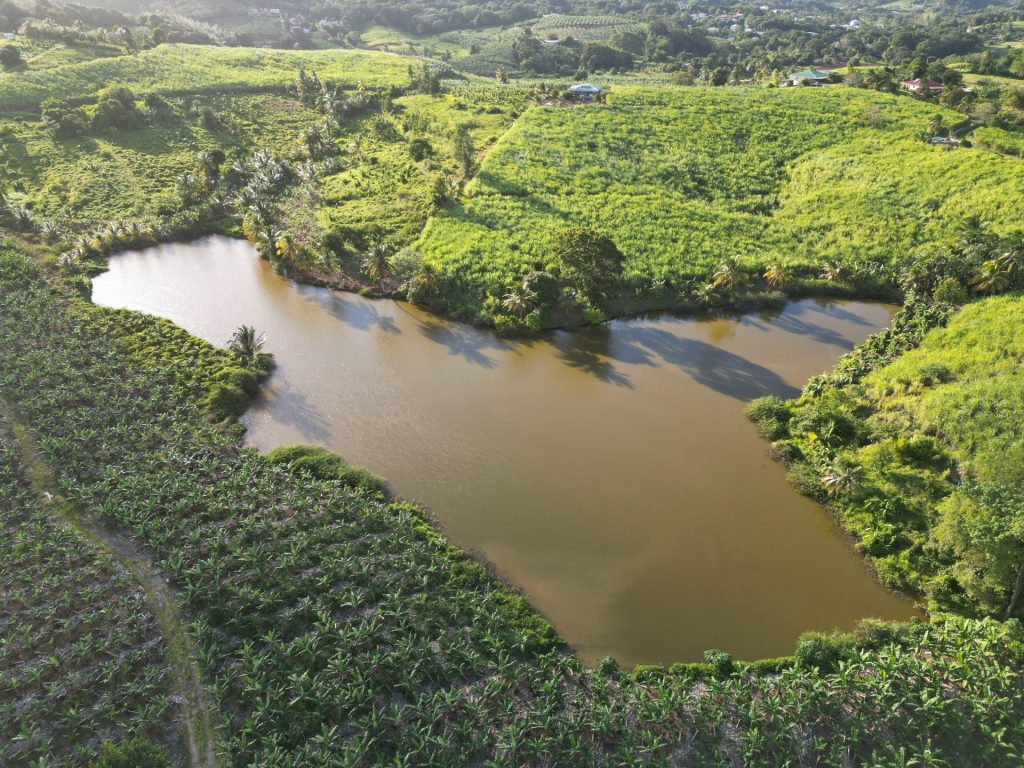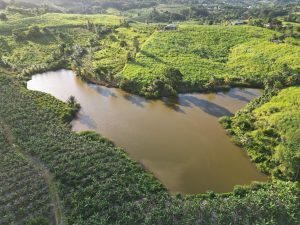A study by LSCE (CEA/CNRS/UVSQ), BRGM and CIRAD sheds new light on the extent of soil contamination by chlordecone, an insecticide used until 1993 in the French West Indies. Based on radiocesium inventories coupled with chlordecone measurements, this study highlights the persistence of the pollution. The main cause is soil erosion linked to agricultural practices, which leads to an accumulation of contaminated particles at the bottom of banana plantation slopes.

A new study has measured chlordecone concentrations in the soil of a banana plantation and in the sediment of an agricultural reservoir, which drains the banana plantation fields where the insecticide was massively used until 1993 in the French West Indies.
The verdict is clear: “if we consider constant particle transfer and in view of the stocks present in the soils, the time required to transfer all the chlordecone contained is between 4,000 and 11,000 years, due in particular to the storage of this pollutant in the soils and deposits at the bottom of cultivated slopes”, announces Remi Bizeul, whose thesis at LSCE is at the heart of the study conducted with BRGM and CIRAD.
The results reveal contamination of deep soil layers, down to 80 cm, due to remobilization and accumulation of contaminated soil particles at the bottom of the slope.
An acceleration in the rate of soil erosion
To reach these conclusions, the researchers used the method of radiocesium (Cs-137) inventories, emitted by atmospheric nuclear testing in the 1960s, which provide information on soil redistribution. They coupled them with chlordecone concentration measurements to study the redistribution of contaminated particles.
By analyzing the sediment accumulation in the agricultural reservoir in relation to the surface area drained, they were able to determine the temporal evolution of soil erosion rates. In conjunction with the increase in chlordecone concentrations since the 2000s, this erosion has accelerated, as Olivier Evrard, director of the thesis, explains: “We show the contribution of contaminated sediments to Martinique’s rivers and coastline, as well as the increase in this contribution following a change in agricultural practices such as the use of chemical pesticides and intensive ploughing, which increase the erosion of cultivated soils”.
Dissolved and particulate transfers
The study also sheds new light on insecticide transfer processes in the environment. Previously, researchers were mainly interested in dissolved transfers. This mode corresponds to contamination of groundwater by infiltration of water and associated chlordecone into soils and, ultimately, of rivers and coastal springs by groundwater drainage. In this case, they also consider particulate transfer, i.e. the removal and transport of contaminated particles. These two processes lead to the long-term dispersion of contamination in the environment, posing a risk to ecosystems and populations located downstream of contaminated areas.
Link to the publication in Environmental Pollution

